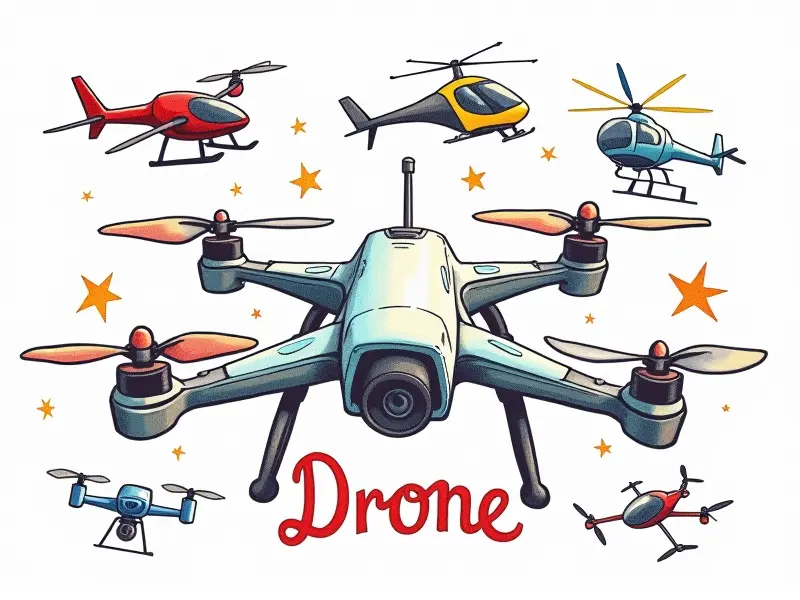How to land an RC plane safely?

Mastering Safe Landings for RC Planes
Landing your remote control (RC) plane safely is a critical skill that every hobbyist should master. A safe landing not only ensures the longevity of your aircraft but also enhances your flying experience by reducing stress and increasing confidence. This article delves into essential techniques, common pitfalls to avoid, and expert tips to help you land your RC plane like a pro.
Achieving Precision in RC Plane Touchdowns
One of the most challenging aspects of RC plane flying is achieving precision during touchdown. A smooth and controlled landing requires practice and understanding of several key factors:
- Approach Angle: The angle at which your plane approaches the runway should be neither too steep nor too shallow. Aim for a gradual descent that allows you to maintain control.
- Air Speed Management: Adjusting your airspeed is crucial during landing. Too fast, and you risk overshooting; too slow, and you might stall. Maintain an optimal speed throughout the approach.
- Throttle Control: Proper use of throttle can make or break a landing. Gradually reduce throttle as you near the ground to ensure a gentle touchdown.
Essential Techniques for Safe RC Plane Descents
A safe descent is essential for a successful landing. Here are some techniques that will help you manage your plane's descent effectively:
- Flare Technique: The flare involves slightly increasing the angle of attack just before touchdown to reduce speed and cushion the impact.
- Sideslip Control: Use a sideslip (or slip) when necessary to correct for crosswinds or misaligned approaches. This technique helps maintain stability during landing.
- Landing Gear Positioning: Ensure your plane's landing gear is properly aligned and functioning before attempting any descent. Misalignment can lead to uneven weight distribution and instability.
Avoiding Common Mistakes in RC Plane Landings
Mistakes are inevitable, but recognizing them early can prevent accidents. Here are some common errors to avoid:
- Overcontrolling: Overuse of control inputs during landing can cause instability and loss of control.
- Landing Too Fast or Slow: Both extremes can result in poor landings. Practice adjusting your speed for optimal performance.
- Failing to Adjust for Wind Conditions: Ignoring wind direction and strength can lead to overshooting the runway or landing short of it.
Safeguard Your RC Plane with Expert Landings
To safeguard your RC plane, you must adopt expert techniques that ensure a smooth and controlled descent. Here are some advanced tips:
- Practice in Calm Conditions: Start by practicing landings on calm days to build confidence before tackling more challenging conditions.
- Use Checklists: Before each flight, go through a checklist to ensure all systems are functioning correctly and that you have the necessary equipment for safe landing.
- Monitor Weather Conditions: Keep an eye on weather forecasts and avoid flying in conditions that could compromise your safety or the plane's performance.
Tips for Smooth RC Plane Landings
A smooth landing is a hallmark of skilled piloting. Here are some practical tips to help you achieve this:
- Visualize Your Landing: Before initiating the descent, visualize your approach and touchdown. This mental preparation can significantly improve your performance.
- Adjust for Wind Direction: Use a crosswind correction technique if necessary to maintain control during landing.
- Land with Purpose: Approach the runway with intent and focus. A deliberate mindset helps you make quick adjustments as needed.
Perfect Your RC Plane's Soft Landing Skills
A soft landing is not just about touching down gently; it’s also about minimizing wear on your aircraft. Here are some strategies to perfect this skill:
- Gradual Descent: Avoid abrupt descents that can jar the plane's structure.
- Use Flaps Wisely: Deploy flaps appropriately to increase lift and control during landing.
- Smooth Throttle Reduction: Gradually reduce throttle as you near the ground to ensure a gentle touchdown.
The Art of RC Plane Soft Landings
Mastery of soft landings is an art that requires patience and practice. Here are some advanced techniques to refine your skills:
- Practice with Different Planes: Experimenting with various models can help you understand the nuances of each aircraft's landing characteristics.
- Seek Feedback from Experienced Pilots: Learning from others who have mastered soft landings can provide valuable insights and tips.
- Record Your Landings: Videotaping your practice sessions allows you to review and analyze your technique for continuous improvement.
Achieving Perfect RC Plane Touchdowns
The perfect touchdown is the culmination of all landing techniques. Here’s how to achieve it:
- Consistent Approach: Maintain a consistent approach angle and speed throughout your descent.
- Smooth Transition: Ensure a smooth transition from descent to flare, minimizing any sudden movements that could disrupt stability.
- Precision Control: Use precise control inputs to guide the plane onto the runway with pinpoint accuracy.
Techniques for Safe RC Plane Descents
Safeguarding your RC plane during descent involves several key techniques:
- Monitor Airspeed: Keep a close eye on airspeed to ensure it remains within the optimal range.
- Use Trim Settings: Adjust trim settings as needed to maintain stability and control throughout the descent.
- Avoid Sudden Movements: Steer clear of abrupt changes in direction or altitude that could destabilize your plane.
Landing Your RC Plane Like a Pro
Becoming an expert at landing your RC plane requires dedication and practice. Here are some final tips to help you land like a pro:
- Continuous Learning: Stay informed about new techniques, technologies, and best practices in the RC flying community.
- Build Confidence: The more you practice, the more confident you will become. Confidence translates to smoother landings.
- Enjoy the Process: Remember that mastering landing skills is a journey. Enjoy each step of your progress and celebrate your successes along the way.
By incorporating these techniques into your practice routine, you'll be well on your way to becoming an expert in RC plane landings. Happy flying!

